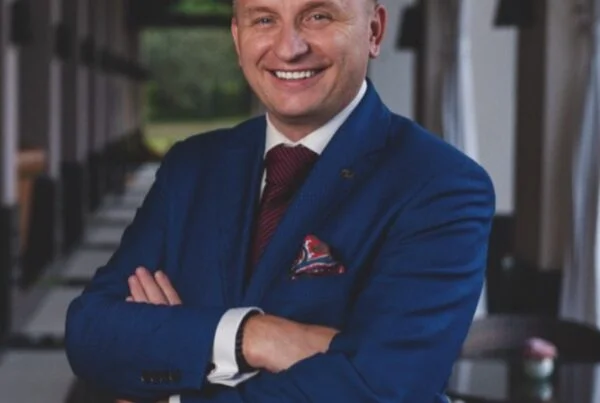The life of a facility executive is a study in contrasts. Comfort. Safety. Two vital goals, each demanding attention. Yet, striking a balance is not an easy feat. It requires careful planning, meticulous execution, and the ability to juggle a variety of tasks. But how do they do it?
Responsibilities of Facility Executives
They start their day with a checklist. Long. Detailed. Every item a responsibility. Ensuring that restrooms are stocked and clean. Monitoring the temperature for optimal comfort. Responding to maintenance requests with the swiftness of a hummingbird. All the while, keeping in mind the safety and security of every occupant. It’s a Herculean task, one that requires dedication, focus, and a tireless work ethic.
But even Hercules had help. So do they. They rely on teams. Teams that work in tandem, sharing the load. They tap into the collective wisdom, the shared experience, the team spirit. Together, they strive to create a safe, comfortable environment for everyone in the building.
Yet, even as they manage these day-to-day tasks, they face another challenge. Outsourcing. A double-edged sword. It can be a lifesaver, easing the burden, sharing the load. Or it could turn into a nightmare, full of failed expectations and disappointing outcomes.
The key, then, is to tread with caution. To choose partners carefully. To set clear expectations. And when outsourcing fails, as it sometimes does, to have a contingency plan ready. A plan that allows them to rise from the ashes, to turn a setback into a comeback.
Prioritizing Building Occupant Experience
-
The comfort and satisfaction of occupants is always a top priority.
-
They make sure restrooms are clean and well-stocked. No one should have to face an empty soap dispenser or a paper towel holder.
-
Temperature control is crucial. Too hot or too cold can lead to discomfort, affecting productivity and morale.
-
Break rooms are kept clean and inviting – a place to relax, recharge, and connect.
-
Repair requests are addressed promptly. Delays are not an option.
Ensuring Safety and Security Measures
Surveillance Systems
Keeping a watchful eye on every corner of the building, ensuring that occupants are safe and secure.
Fire Safety
Installing smoke detectors, fire extinguishers, safety signage, and conducting regular fire drills. Prevention is better than cure.
Access Control
Implementing strict access control measures. Who goes in, who goes out – every movement is monitored.
Emergency Plans
Preparing for the unthinkable. Emergency exit routes, safety drills, evacuations plans. Hope for the best, plan for the worst.
Outsourcing Responsibilities to Vendors and Contractors
Outsourcing. An act of trust. Trust in the capabilities of the vendor. Trust in their commitment to deliver as promised. But trust, as they say, needs to be earned. And the only way to earn it is through consistent performance, dependable service, and uncompromised quality.
Yet, outsourcing isn’t just about shifting responsibilities. It’s about partnering. Collaborating. Working hand-in-hand towards a common goal. It’s about leveraging their expertise, their resources, their know-how to enhance the occupant experience.
However, things don’t always go as planned. Mistakes happen. Deadlines are missed. Expectations aren’t met. How does one deal with such situations? By being prepared. By having a plan B. A contingency plan that kicks in when things go south.
The key here is to have clear communication. To set realistic expectations. To establish a robust feedback mechanism. And most importantly, to foster a relationship based on mutual respect and understanding.
Challenges Faced by Facility Executives
-
Meeting the high expectations of occupants.
-
Juggling multiple tasks and responsibilities.
-
Managing and coordinating with vendors and contractors.
Importance of Thoroughly Vetting Third-Party Partners
Hiring a third-party partner is a critical decision. One that can’t be taken lightly. They need to be reliable, competent, and professional. They need to understand the vision, the mission, the ethos of the organization. They need to be committed to delivering excellence, every single time.
A thorough vetting process is, therefore, non-negotiable. It involves checking their credentials, their track record, their reputation in the market. It involves speaking to their previous clients, understanding their work culture, their approach to problem-solving.
But vetting isn’t a one-time process. It needs to be an ongoing activity, a continuous assessment of their performance, their conduct, their commitment to the task at hand. It’s about ensuring that they continue to be the right fit, that they are living up to the expectations, that they are delivering value for money.
Strategies for Managing Expectations and Contingency Planning
Expectations are like a mirage. Always changing, always elusive. Managing them requires skill, patience, and a deep understanding of human behavior. It’s about setting realistic goals, communicating effectively, and delivering on promises.
Yet, despite the best efforts, things may not always go as planned. That’s where contingency planning comes into play. It’s like a safety net, providing a fallback option when plans fail. It provides a sense of security, a reassurance that even if things go wrong, there’s a plan to set them right.
Contingency planning is a proactive approach. It involves identifying potential risks, preparing for different scenarios, and coming up with strategies to mitigate those risks. It’s about being prepared, being agile, being ready to face any challenge that comes their way.
Managing expectations and contingency planning go hand in hand. They are two sides of the same coin. Together, they help create an atmosphere of trust, positivity, and resilience. They contribute to a better occupant experience, a safer environment, and a more productive workspace.
Now, isn’t that music to a facility executive’s ears?



